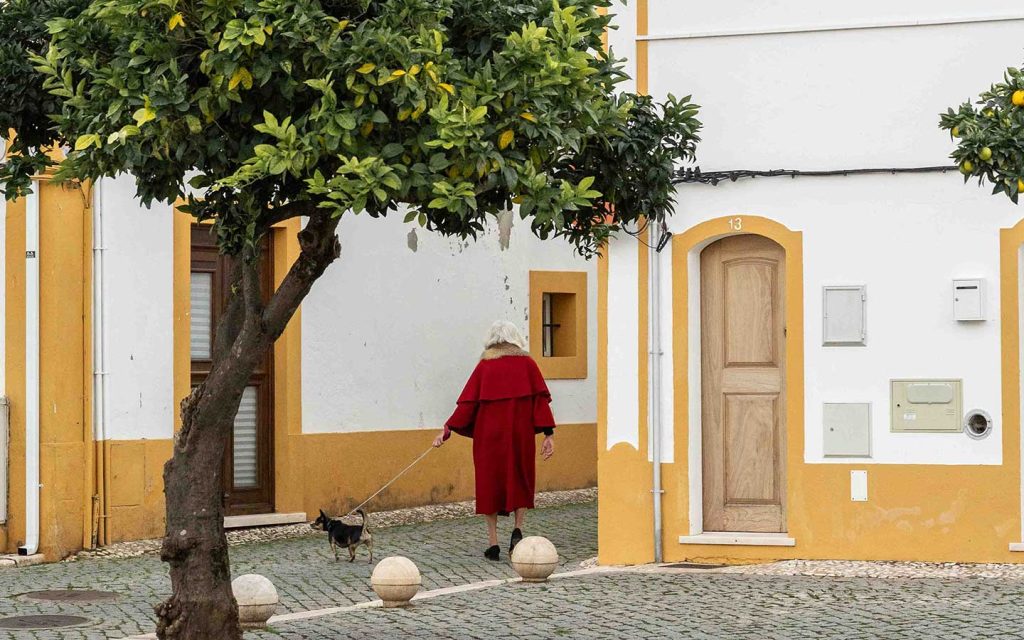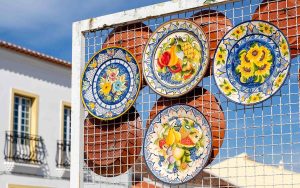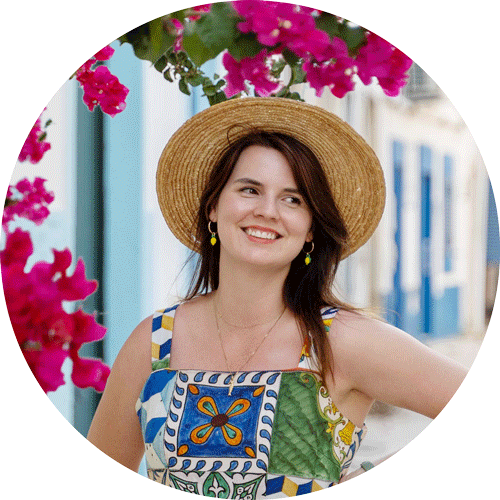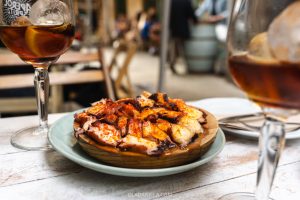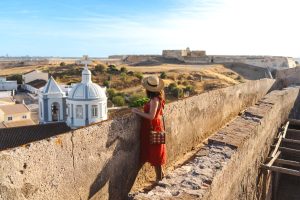The Alentejo region is easily one of my favourite parts of Portugal to explore. There’s something instantly relaxing about being out in the countryside, passing fields where sheep and black pigs graze beneath cork tree forests and ancient olive groves. With each vineyard and whitewashed village that flashes by the car or train window, time slows a little more.
For a chilled out long weekend or a delicious week of slow travel, there’s nowhere better to escape to from Lisbon. I’m based in the Portuguese capital and have made many many trips to visit the Alentejo’s most beautiful villages, towns and small cities.
But be warned, it’s not small! The Alentejo has just 500,000 people and is one-third of the country. Villages and towns are spread out, giving you plenty of space to breathe deep and connect with the terra (earth). I’ve split the best places to visit into central and north Alentejo, coastal Alentejo, and lower or Baixo Alentejo.
Contents
ToggleHow far is the Alentejo from Lisbon?
Great question… it’s both really close and terribly far. If you jump in a car you can reach the Alentejo region in just 20 or 30 minutes, but if you’re heading to somewhere close to the border with Spain you might be driving two or more hours.
There’s a good train line between Lisbon and the Alentejo capital, Évora. It doesn’t really stop anywhere else though, so without a car you’ll be reliant on the bus or coach network.
Best places to visit in North & Central Alentejo (Alto Alentejo & Alentejo Central)
Évora, the Alentejo capital
90-minute drive from Lisbon (Google Maps), option of train from Lisbon too


Underrated Évora is one of my favourite cities in Portugal. The UNESCO-listed historic centre is almost entirely surrounded by medieval walls, wrapping- 2,000 years of history into a walkable package. The walls contain a labyrinth of squares, parks, churches and landmarks, from a Roman temple to the grand medieval cathedral.
There’s loads to see, amazing traditional sweets, fantastic restaurants, great museums, and brilliant local shopping. Plus just beyond the city walls you’ll be back in the countryside where vineyards, cork trees, olive groves, and prehistoric monuments lie.
Read next… 20 best things to do in Évora and 48 hours in Évora
Monsaraz, a hilltop medieval village
2-hour, 10-minute drive from Lisbon, 55-minutes from Évora (Google Maps)
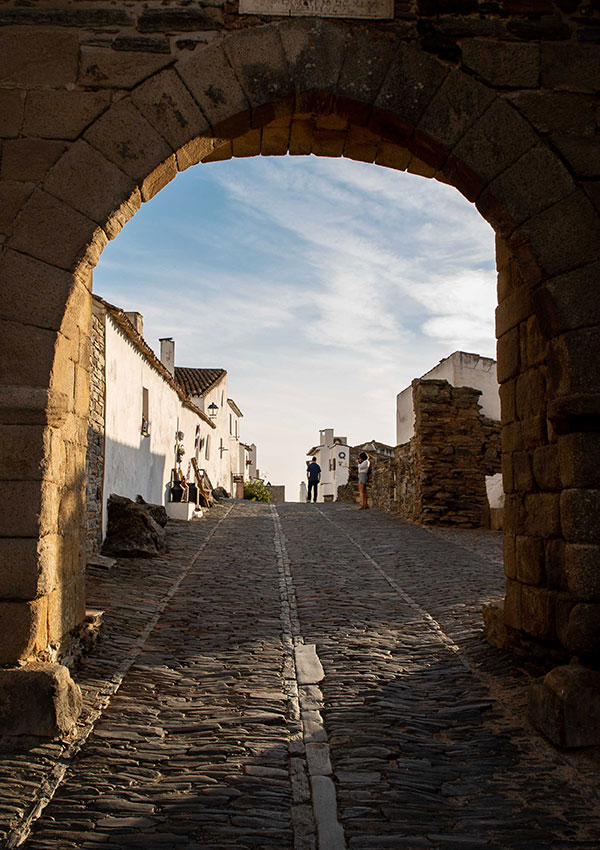
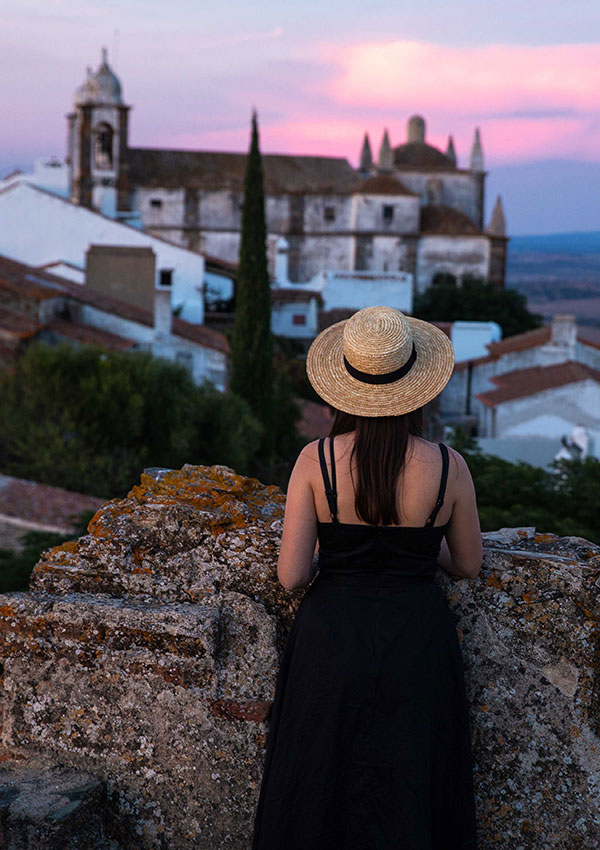
The medieval hilltop village of Monsaraz is another of my favourite places in all of Portugal. There’s something magical about this tiny place. With just a handful of slate-lined streets, whitewashed houses, an imposing castle and just 30 residents, it’s at once a lively place and somewhere where time moves in an alternate universe.
This area of the Alentejo region is dotted with cute towns, wineries, olive groves, prehistoric monuments and the biggest artificial lake in Europe, Alqueva Lake. It’s an incredible place to watch the sunset while breathing deep and thinking about life’s great mysteries.
Read next… 48 hours in Monsaraz
Corval, the pottery village
2-hour drive from Lisbon, 45-minutes from Évora (Google Maps)
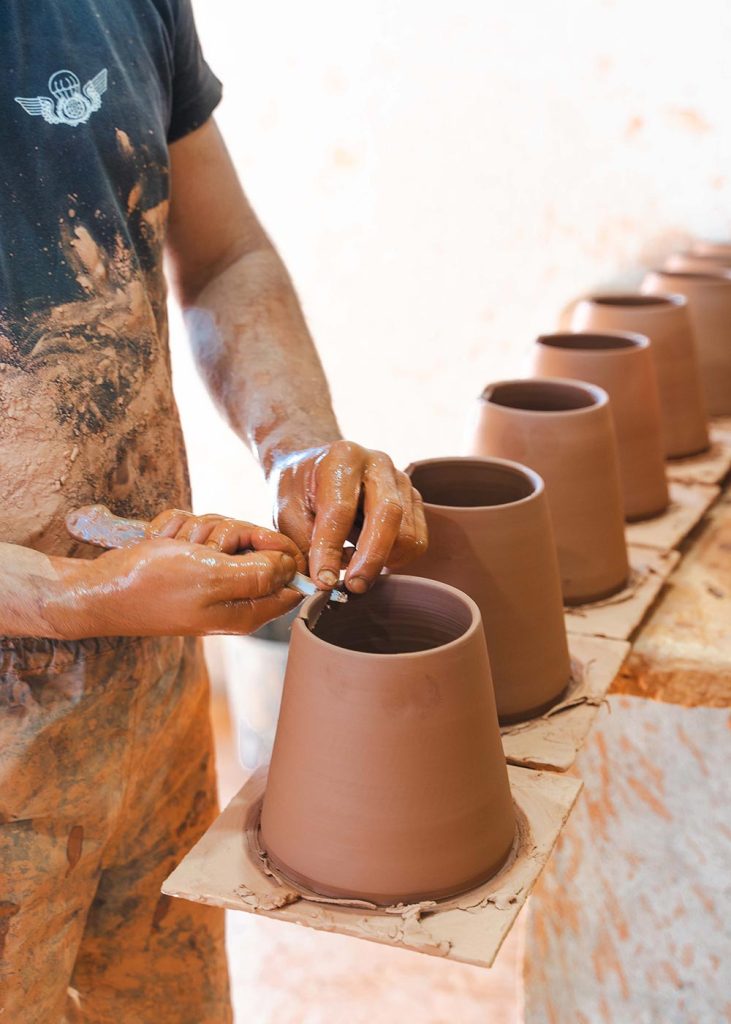

Just down the hill from Monsaraz lies Portugal’s pottery village: São Pedro do Corval. It’s not a particularly pretty village, but here between the fields of ancient olive groves, cork trees, and almonds are almost two dozen small-scale family-run pottery houses, each working with terracotta clay to produce traditional and colourful Portuguese ceramics.
Step inside any doorway that says “olaria” (pottery workshop) and you’ll often find both a workshop and retail store in the one space. Men covered in red dirt spin the rich, red terracotta clay into plates, jugs and cups on the wheel as steady-handed painters add colourful traditional scenes or modern designs to the pieces.
Read next… Portugal’s pottery village: Why you should visit São Pedro do Corval
Estremoz, the Alentejo town with the marble tower
1-hour 45-minute drive from Lisbon, 35 minutes from Évora (Google Maps)
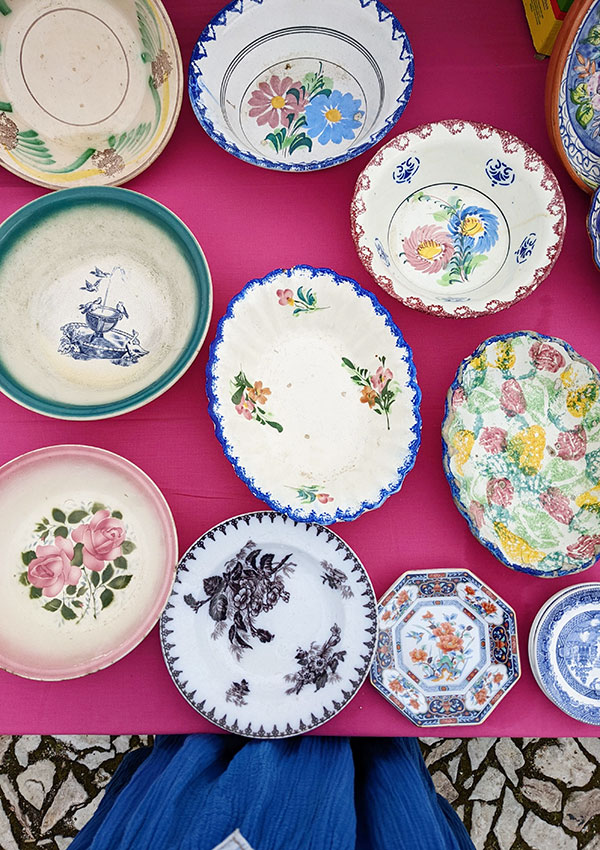

Estremoz is a larger town in the Alentejo, whose long history stretches back to 1258. This typical Alentejo town, close to the Spanish border, has a fortified old town with a white marble tower you can climb to the top of. Get lost in the streets, following footpaths lined with crushed marble offcuts, until your nose takes you to a local tavern for lunch, or into Howard’s Folly for a wine tasting. On Saturdays, the local feira (temporary market) is legendary, bringing in locals and farmers with cheese, vegetables, antiques, vintage goods and all sorts.
Read next… Best things to do in Estremoz
Elvas, the fortified border town
2-hour drive from Lisbon, 55 minutes from Évora (Google Maps)
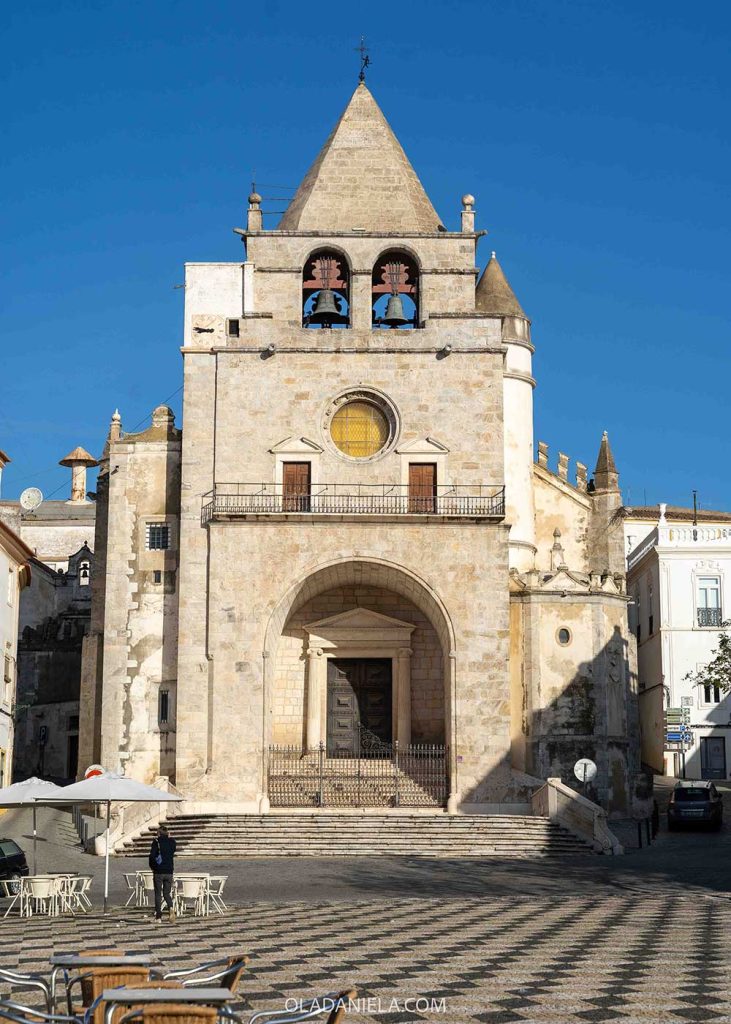
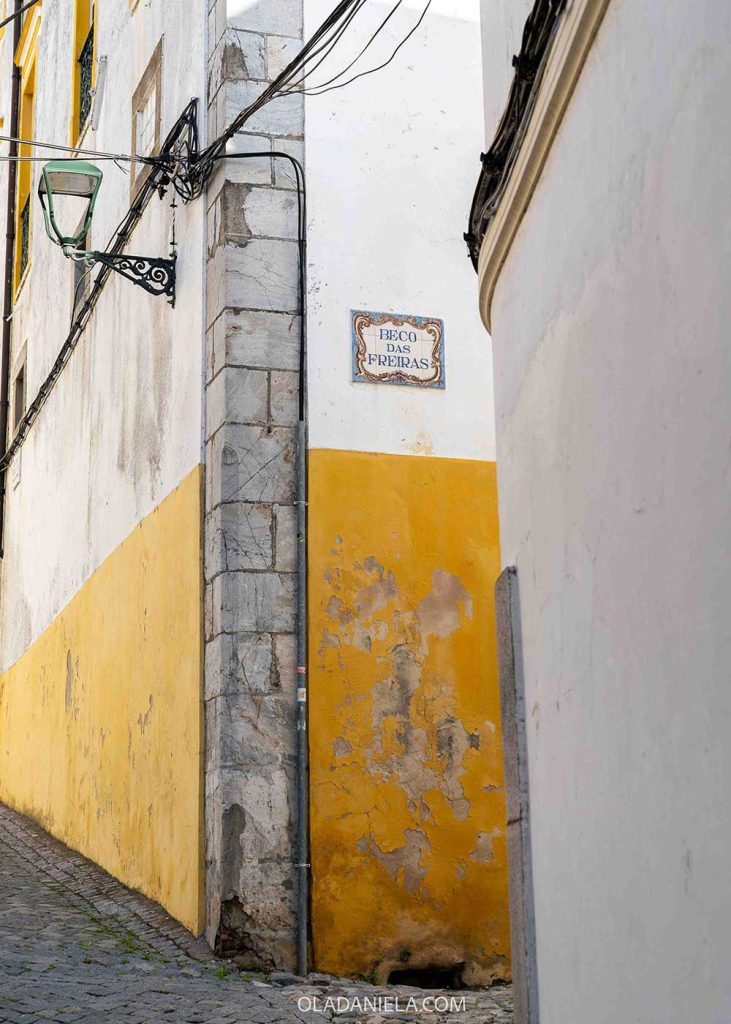
Set on a hill just a few miles from the large Spanish city of Badajoz, Elvas has a storied history closely linked to war and resistance. While it has Moorish roots, with some traces left in the old town, and a medieval castle, it was only after the Restauração da Independência (Restoration of Independence) in 1640 that the whole Alentejo town was fortified.
You feel this history as you walk or drive in, passing these thick walls that protect the whole city. From within you might spy the Fortaleza de Santa Luzia (Santa Lucía Fort) or the Nossa Senhora da Graça Fort, on either side of the city forming a line of protection against Spain. You can learn more at the Elvas Military Museum.
Arraiolos, for rugs and pies
80-minute drive from Lisbon, 20 minutes from Évora (Google Maps)
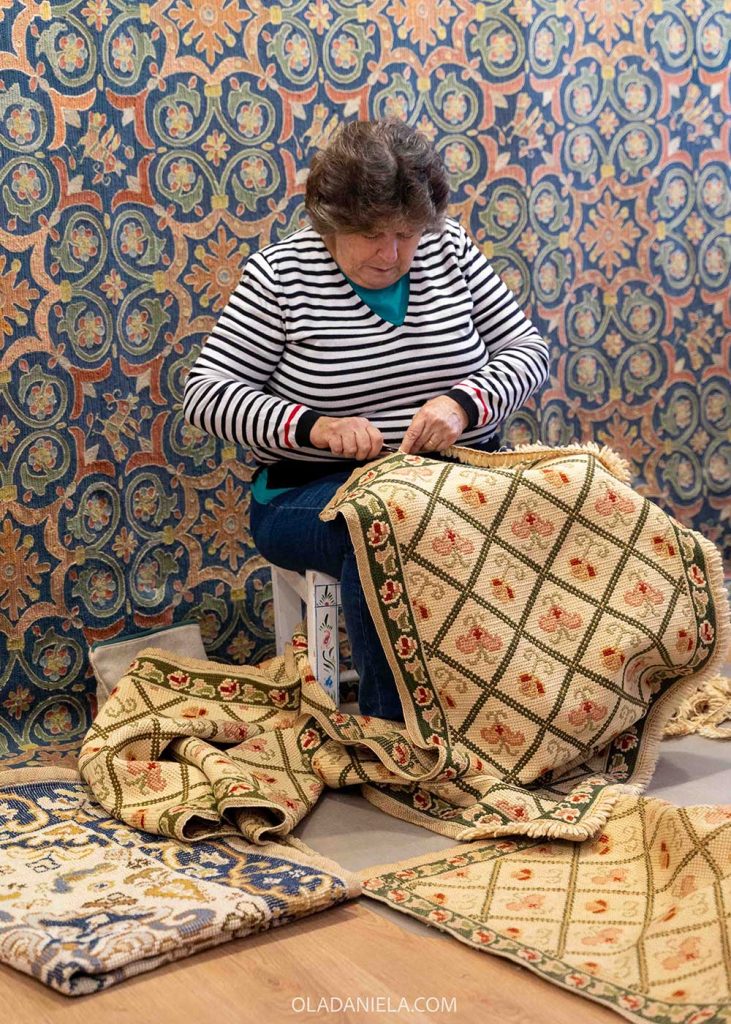
Cross-stitched rugs, small chicken pies, and a round castle are the things that define Arraiolos, an Alentejo town close to Évora. Wander the whitewashed streets trimmed with mustard yellow or cobalt blue — this is the Alentejo, afterall — before you stop for a quick empada da galinha (chicken pie) or take your time with lunch at O Alpendre.
The rug museum (Centro Interpretativo do Tapete de Arraiolos) is a great place to learn about the craft heritage and see women in action, and nearby the Pousada Convento Arraiolos has a gorgeous chapel filled with blue-and-white azulejos.
Vila Viçosa, for marble and the Ducal Palace
1-hour 50-minute drive from Lisbon, 45 minutes from Évora (Google Maps)
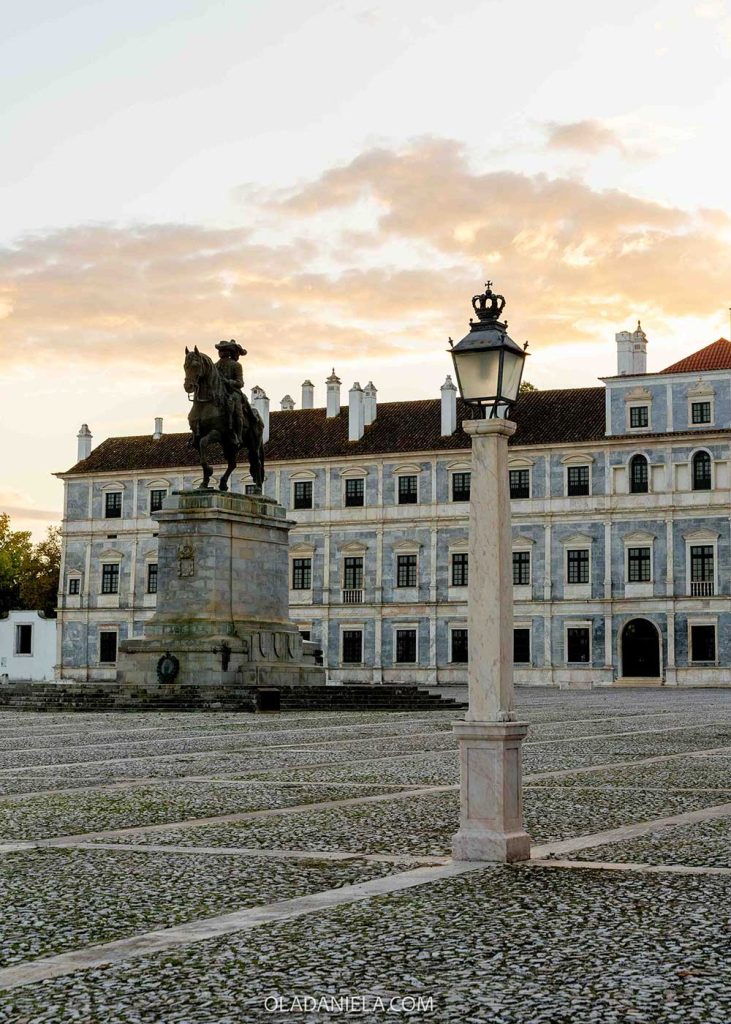
I knew Vila Viçosa was famous for its marble and the Paço Ducal de Vila Viçosa (Ducal Palace), but I didn’t realise it would be such a charming Alentejo town to visit. With royal roots, a castle, and marble and orange tree-lined streets, it’s a grand little place with plenty to explore.
Stroll down the stately Avenida da República, then dip into the medieval castle quarter, within the walls of which lie a couple of streets lined with tiny houses. In the town you’ll find many grand marble-clad churches, marble fountains, and the original House of the Dukes of Bragança, the third Portuguese royal dynasty, who called the enormous Ducal Palace home for 500 years. It’s covered in black and white marble and you can step inside to catch a glimpse of the lifestyle of Portugal’s final dynasty.
Marvão, a hilltop village within a reserve
2.5-hour drive from Lisbon, 1.5 hours from Évora (Google Maps)
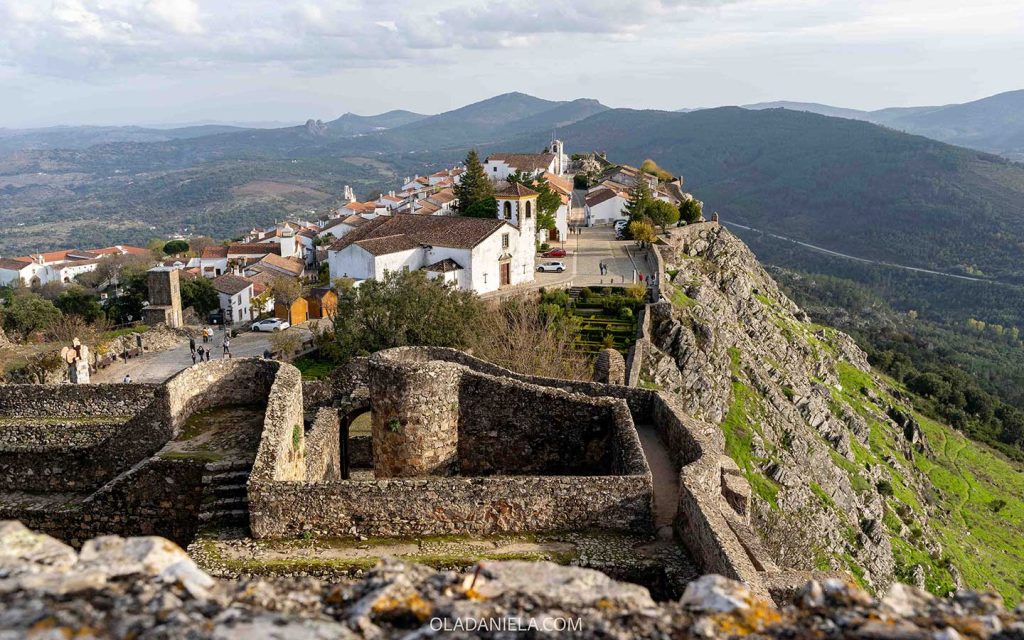
Standing at the top of Marvão Castle’s keep, looking out over the rugged landscape of Parque Natural de São Mamede, you’ll feel more alive than ever as you breathe it all in. Similar to Monsaraz, this medieval hilltop village, which is perched on a quartzite crag, has just a handful of streets but an entirely different feeling.
The village leans into its Moorish roots, with the name Marvão coming from an 8th-century Muwallad rebel named Ibn Marwan. I hope to return for the classical music festival that takes over the streets every year. It’s meant to be amazing.
Close to the village, we visited an olive oil mill once run by António Melara Nunes grandfather. He’s recently restored the project, Azeite Castelo de Marvão, breathing life back into the sleepy village of Galegos. Here you can learn about olive oil, do a tasting, stop for lunch, or even have them process your own olives into oil.
Read next… Best music festivals in Portugal: Complete 2025 guide
Other pretty villages and towns in the central and north Alentejo region
Here are a few more options to explore in this area of the Alentejo
- Santa Susana: very small village with old workers cottages showing how people in these agricultural towns once lived
- Nisa: famous for its terracotta pottery, embroidery and cheese! The town has medieval walls too.
- Castelo de Vide: one of the best preserved Jewish quarters in Portugal, and famous for its healing waters.
- Montemor-o-Novo: close to Évora, this large town has a pretty hilltop castle with gorgeous views.
- Redondo: another cute larger town known for its pottery scene.
- Terena: a village near Redondo with whitewashed houses and a castle.
✨Want help planning your trip across the Alentejo? Chat to Daniela with a private video call, or have her plan your Portugal itinerary ✨
Best places to visit along the Alentejo coast and Costa Vicentina
Alcácer do Sal, for rice fields and a castle
65-minute drive from Lisbon, 1 hour from Évora (Google Maps)
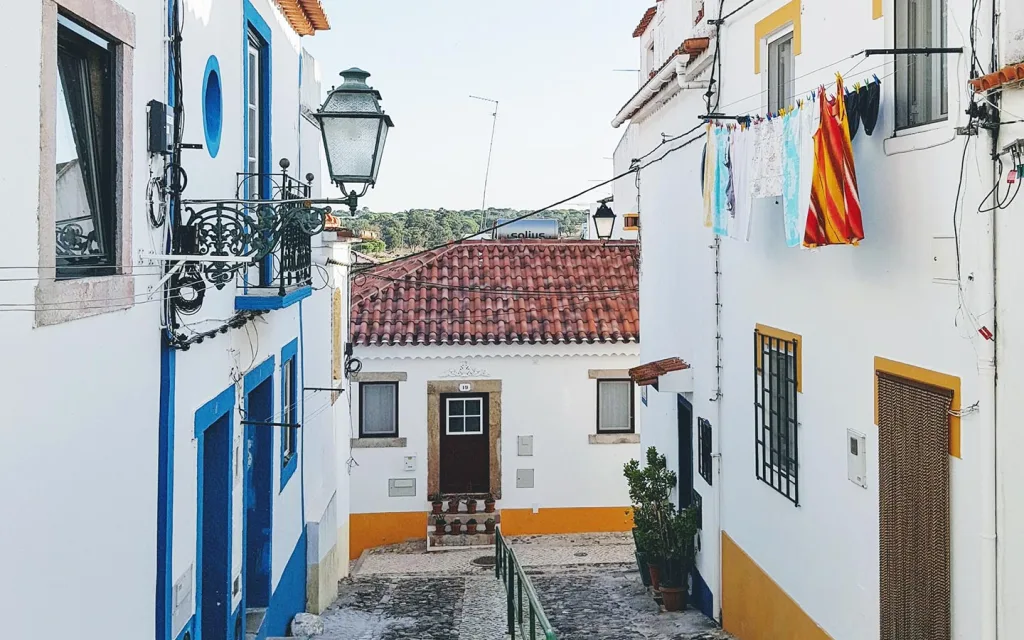
Founded by the Phoenicians, and renamed Salacia by the Romans, the history of Alcácer do Sal stretches back thousands of years – yet this laidback Alentejo town remains largely off the radar. Set on the banks of the Sado River, historic Alcácer do Sal makes a great lunch stop on the way from Lisbon to Lagos, or vice versa.
The riverfront town overlooks a wide valley plain of rice fields, which change colour throughout the year and stretch on seemingly forever. While here don’t miss the Misericordia Church, consecrated in 1547, to find glorious hand-painted tiles from the 1600s, and a beautiful ceiling fresco by painter Francisco Flamengo in 1895. For lunch, try Momento, which serves up modern petiscos by the riverside.
Comporta, the luxe beach region
75-minute drive from Lisbon or from Évora (Google Maps)
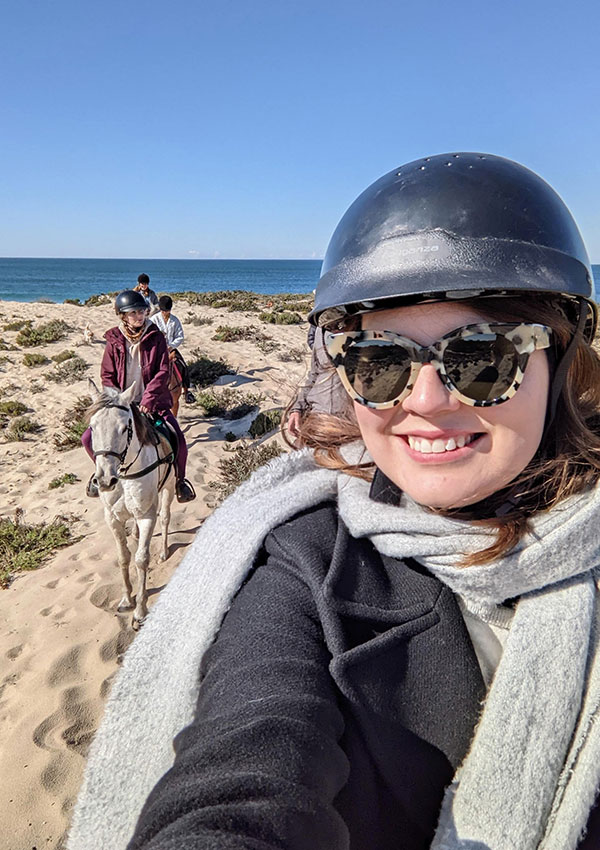
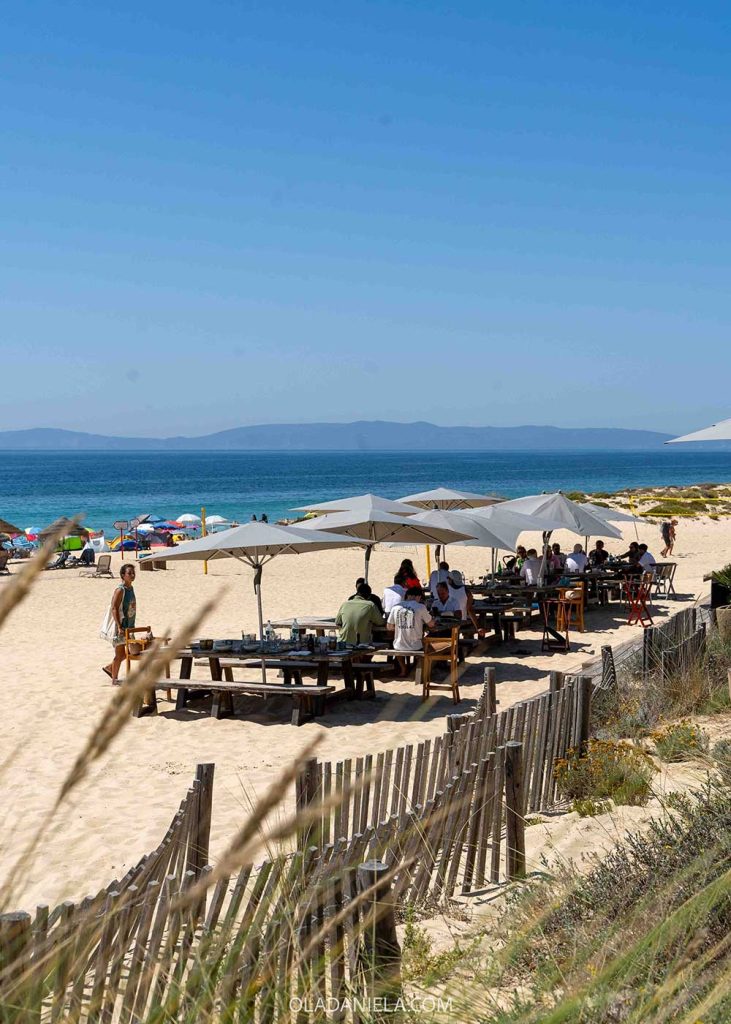
Just over an hour from Lisbon lie some of Portugal’s most beautiful beaches, where wild sand dunes and pine forests separate the icy Atlantic Ocean from rice fields and villages. These days Comporta is a place for Europe’s jetset crowd to gather for quiet and luxe barefoot vacations by the coast. Comporta is both a town and the name for the region, so there’s a bit of choice for exploring.
Read next: The average person’s guide to A-list Comporta: Portugal’s luxe beach town
Melides, the relaxed and quiet town
85-minute drive from Lisbon, or from Évora (Google Maps)
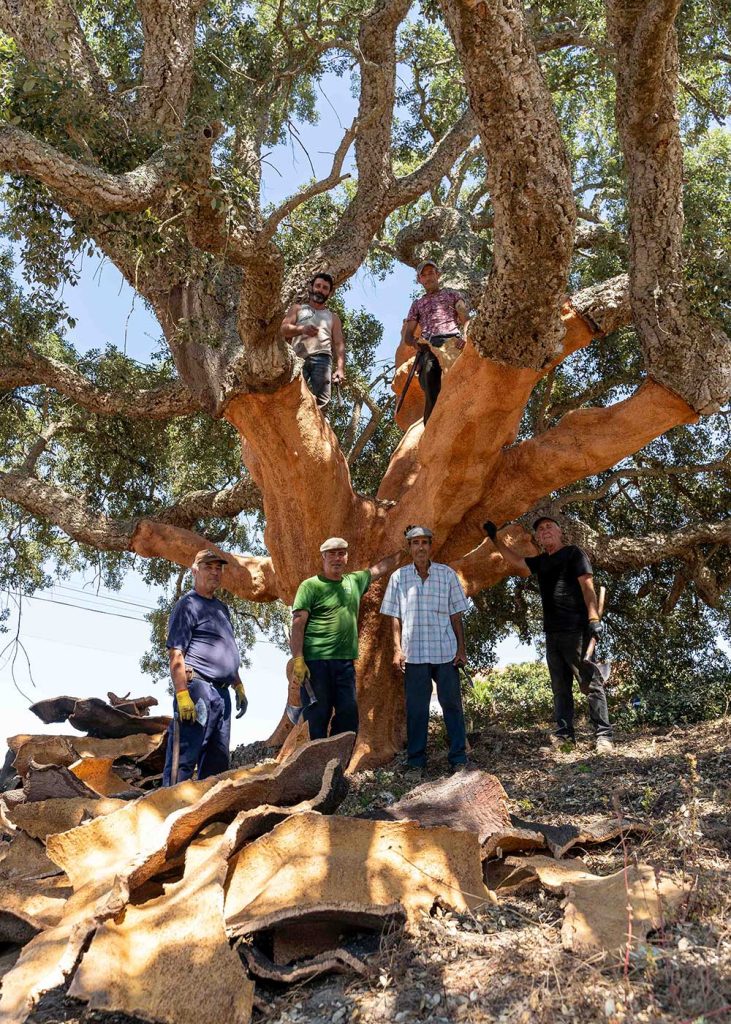
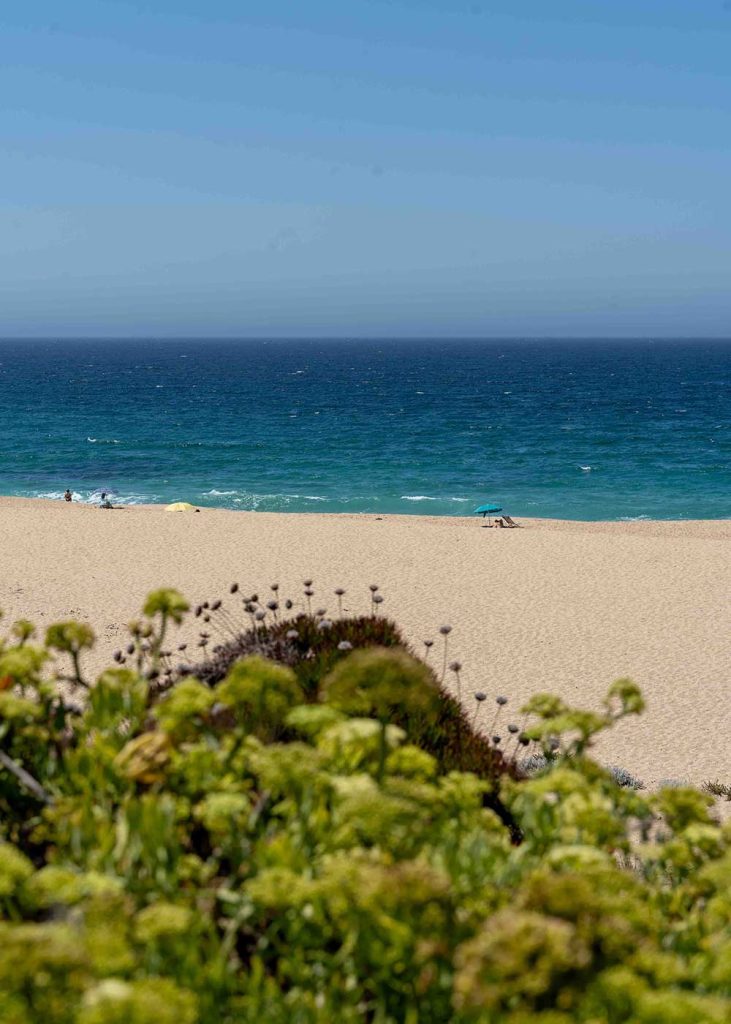
Melides is Comporta’s more laidback neighbour. Here, slightly further south, you’ll find gorgeous wild beaches, seemingly endless farmland, and very little to do. That makes it the perfect place to unwind, reset, and truly relax. The town of Melides itself is charming, and during a summer visit I found the village square (next to the market) was abuzz with activity most nights.
Porto Covo, where the Portuguese go to the coast
1-hour 50-minute drive from Lisbon, or from Évora (Google Maps)
The beaches around Porto Covo are incredibly beautiful. It’s easy to get lost just contemplating the white sands and craggy black rock features. Plus Porto Covo itself is a whitewashed gem with vibrant cobalt blue trim, a charming central square, and great restaurants like Lamelas.
Vila Nova de Milfontes, where the river meets the sea
2.25-hour drive from Lisbon, or from Évora (Google Maps)
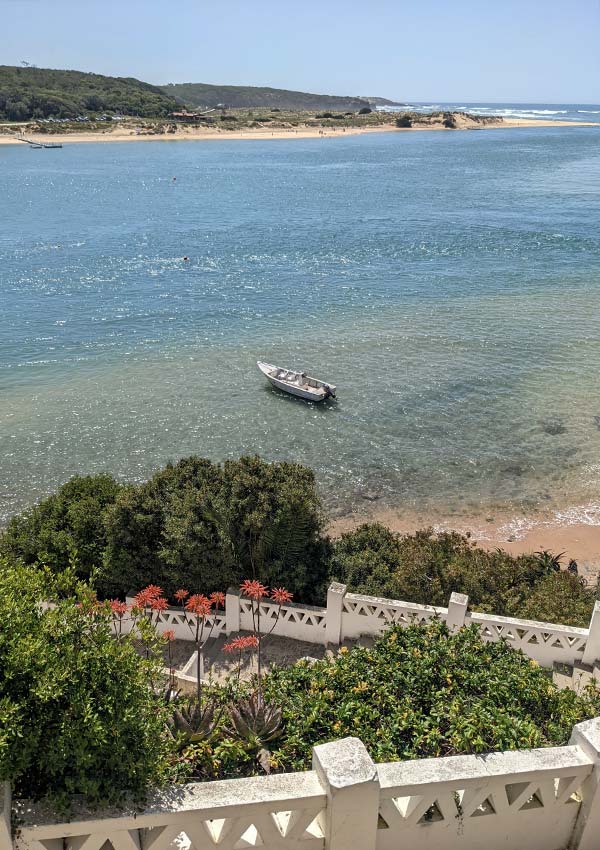
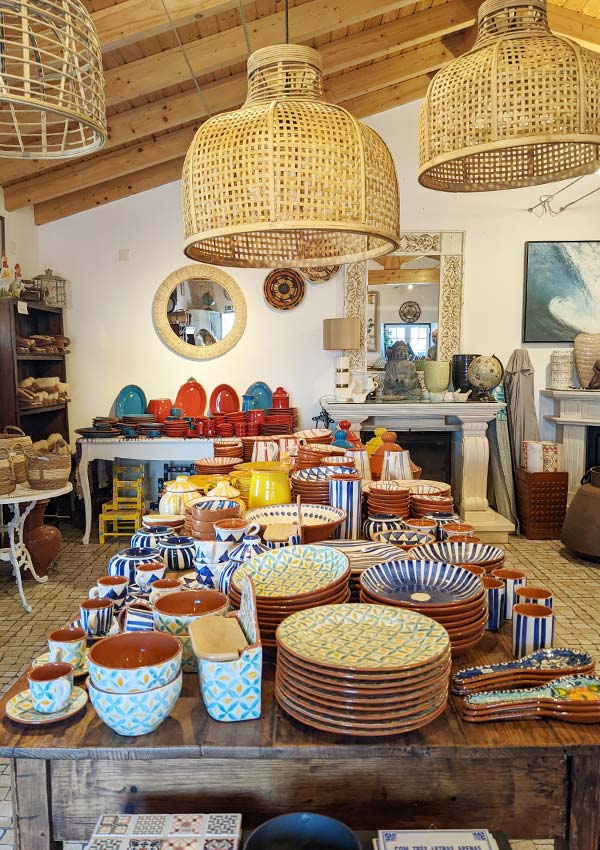
Set at the mouth of the River Mira, Vila Nova de Milfontes is surprisingly gorgeous. I could perch myself on a bench at the lookout near Forte de São Clemente and watch the tides ebb and flow and a little passenger ferry shuffles people across the river forever.
This laidback beach town is the perfect midway point on a road trip from Lisbon to the Algarve but it’s also a great spot to escape – and the Alentejo town has everything you need, including great restaurants. Go for breakfast croissants at Mabi, or a sunset drink at A Choupana on the beach.
Read next… Portugal Road Trip: Where to stop between Lisbon and Lagos, Algarve
Zambujeira do Mar, on the Costa Vicentina
2.5-hour drive from Lisbon, or from Évora (Google Maps)
While Zambujeira do Mar is indeed a famous fishing village along the Costa Vicentina, you really come here for the wild beaches, steep cliffs, and sense of space. This is the last stretch of coast before the Algarve, and the best way to explore is on the Fishermen’s Trail, one of the greatest coastal hikes in the world, which stretches 226.5 km from Sines, in the Alentejo, to Lagos, on the southern Algarve coast.
Other towns to visit on the Alentejo coast
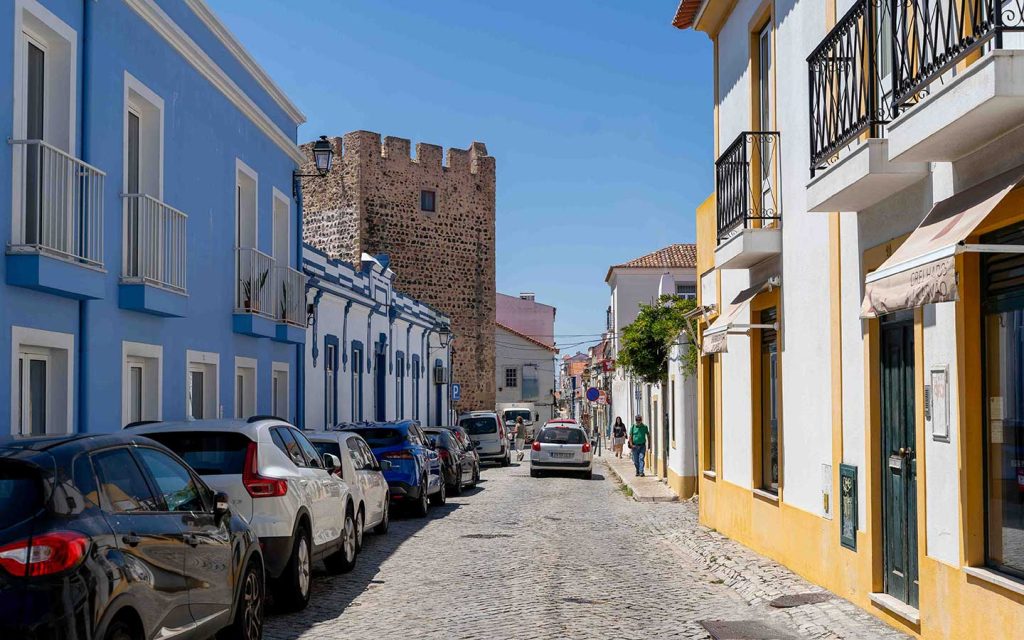
- Sines (pictured): one of Portugal’s largest ports has a cute historic centre with a castle. The famous Vasco da Gama is from here and there’s a great statue of the 15th century explorer.
- Almograve: a little town south of Vila Nova de Milfontes that’s the perfect base for weekends by the beach.
- And if you keep going south…you’ll hit the western Algarve where beloved quiet surf towns such as Arrifana, Aljezur, and Odeceixe lie.
Read next… Itinerary: My ideal 7-day Algarve road trip
Best towns to visit in Baixo Alentejo (Lower Alentejo)
The lower half of the Alentejo is quieter, slower, and more arid than the central belt and coast. Here’s the best Baixo Alentejo towns to explore.
Mértola, with islamic roots by the Spanish border
2.25-hour drive from Lisbon, 1-hour 40 minutes from Évora (Google Maps)
High on my list for 2025 Portugal travel is Mértola, a walled border town set overlooking the Guadiana River. The Romans, Visigoths, and Moors all left their mark here in what was once one of the most important river ports in the Mediterranean. Now the town celebrates its Moorish roots with the biannual Islamic Festival, which is on again in May 2025 and then in 2027. If you visit in between you can still see the Castle of Mértola, which towers over the town, along with a handful of pretty churches and a clock tower.
Serpa, a village of cheese
2-hour drive from Lisbon, 75 minutes from Évora (Google Maps)
Each year in February, Serpa hosts the annual Feira do Queijo do Alentejo (that’s the Alentejo cheese festival!). If you’re not there during the big cheese part, there’s an amazing 13th-century castle, 17th-century aqueduct and a cute centre to explore.
Read next… Food Festival Guide: Best Gastronomic Events in Portugal
Viana do Alentejo, a quiet town with two landmarks
1-hour 45-minute drive from Lisbon, 30 minutes from Évora (Google Maps)

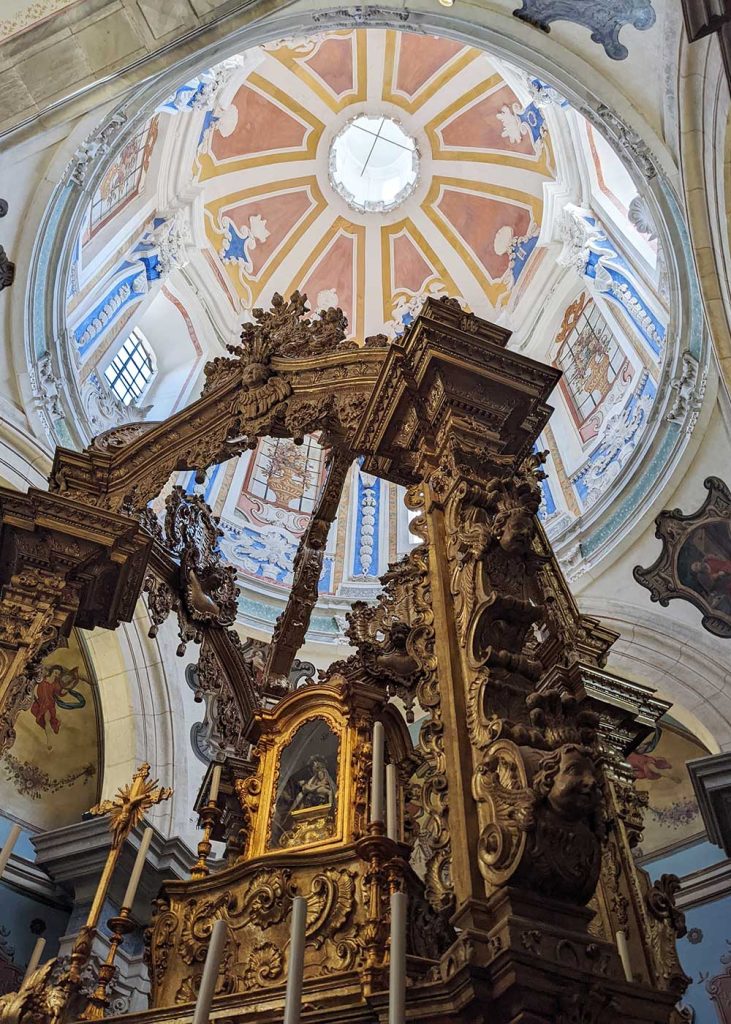
I love this typical Alentejo town. Everyone milling about the town square turned their heads when we entered, wondering where these out-of-towners came from. We popped in one morning to visit the octagonally-shaped Viana do Alentejo Castle, which was remodelled in the 15th century. Then we drove to the Santuário de Nossa Senhora d’Aires, a wedding cake of a church that is unlike any other I’ve seen in Portugal (inside and out). The unique “house of miracles” is filled with photographs of family members. It’s the end point of an annual pilgrimage on horseback that begins in Moita.
Related read: Meet Portugal’s last cowbell makers: Chocalhos Pardalinho
Beja, the rural capital with Roman roots
1-hour 50-minute drive from Lisbon, 1 hour from Évora (Google Maps)
Beja is the largest town in the Baixo Alentejo and home to the highest castle in the whole Alentejo region, which you can summit the 40m-high keep. The small city has roots that date back 2,500 years and you can explore the Jewish and Moorish quarters of the old city, see the cathedral, and catch plenty of events throughout the year.
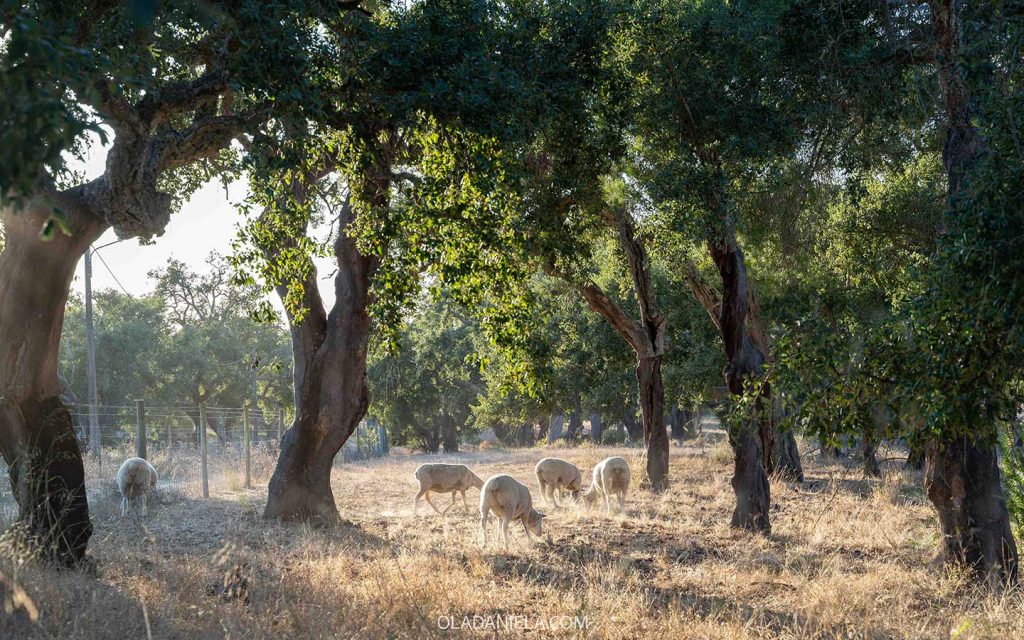
Other hidden gems and cute towns in Baixo Alentejo
- Moura: a fantastic fortified town with a well-preserved Moorish quarter and ruins of a 13th-century castle. It’s close to Alqueva Lake, the largest artificial lake in Europe.
- Alvito: a little town built around an unusual castle (that you can sleep in!) with an amazing church and the chance to hear cante alentejano.
- Vidigueira: this town is famous for wine! Visit to taste local talha wines aged in traditional terracotta vessels. Nearby lies the Roman ruins of São Cucufate too.
- Messejana: cute town and a great lunch stop on the way from Lisbon to the Algarve.
Map of the most beautiful Alentejo villages, towns and cities
Below find a map of all the beautiful Alentejo towns and villages mentioned in this article.
That’s my pick of the best Alentejo towns, villages and cities. Anywhere else I should add to this list? Leave me a comment…
Keep reading…
- Where to eat in Évora: best restaurants, cafés & sweets
- 48 hours in Monsaraz
- My 10 favourite Portugal trips in 2024
- 20 best things to do in Évora, the Alentejo capital
- Where to shop in Évora: artisans & boutiques
- The best tile painting workshops in Lisbon, Porto and the Algarve
- Portugal Road Trip: Where to stop between Lisbon and Lagos, Algarve
- Where to shop for Portuguese ceramics
- Where to shop for tiles (azulejos) in Portugal
- Guide to winter in Portugal: Where to go, things to do & more

